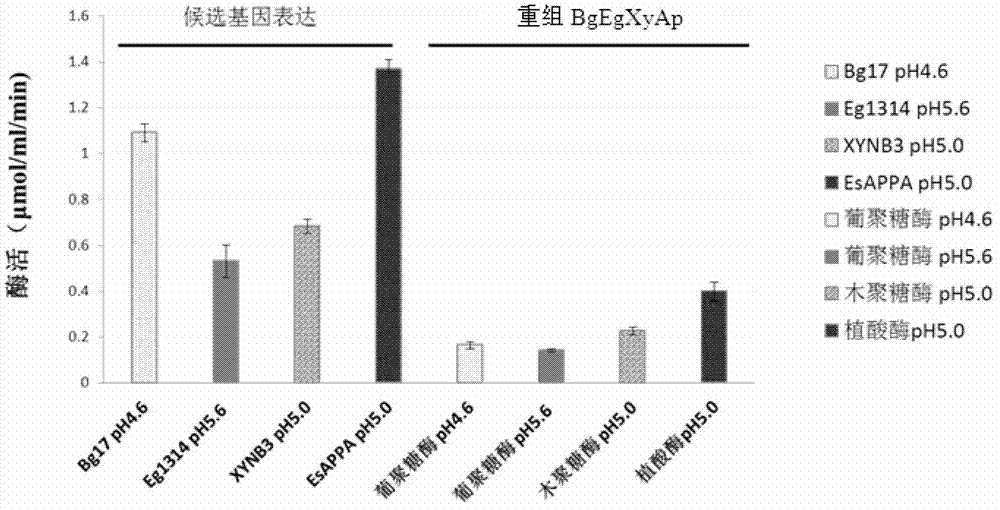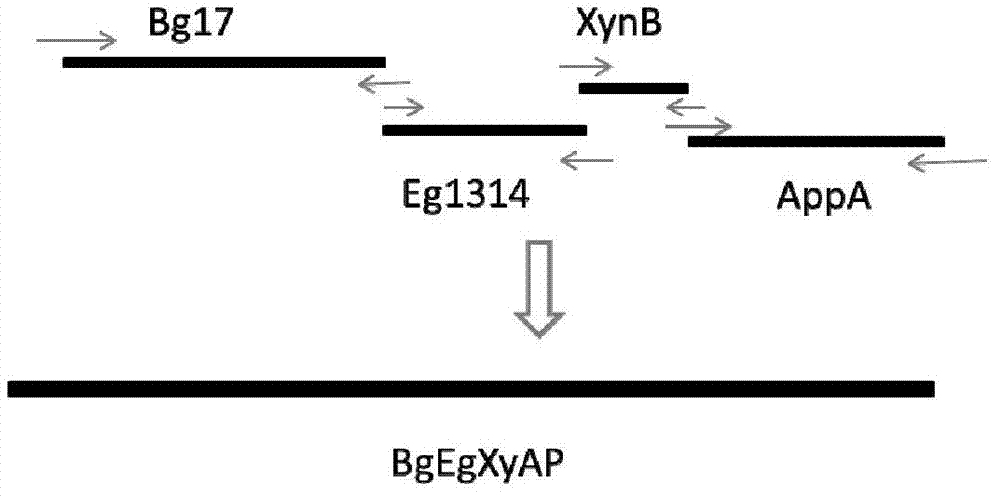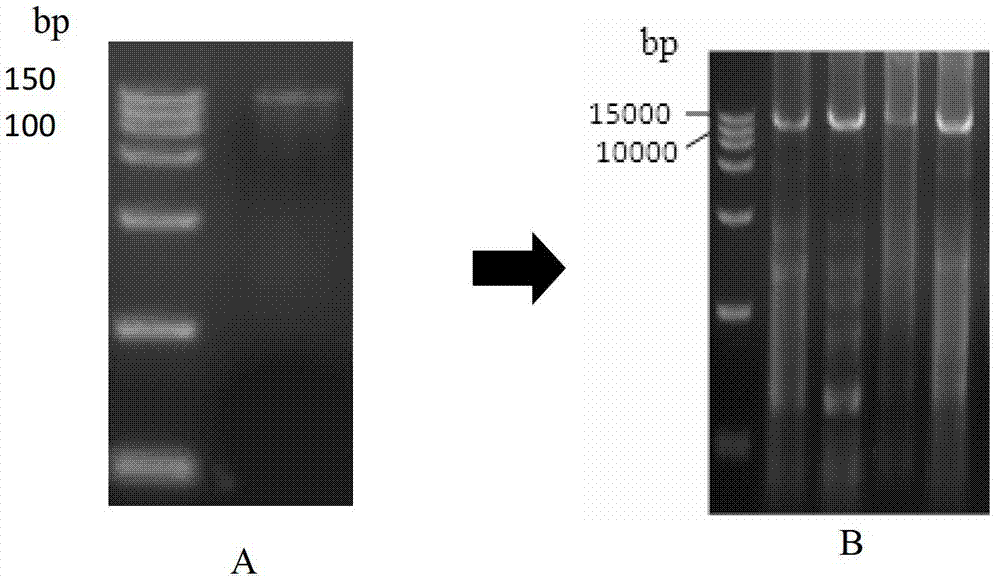Transgenic vector of salivary gland tissue specific expression foreign protein and transgenic pig and construction method thereof
A tissue-specific, transgenic vector technology used in the field of genetic engineering
- Summary
- Abstract
- Description
- Claims
- Application Information
AI Technical Summary
Problems solved by technology
Method used
Image
Examples
Embodiment 1
[0071] Example 1 Construction of the transgene expression vector pPB-MusPSP-neo-EGFP-BgEgXyAp
[0072] Include the following steps:
[0073] 1. Obtaining the target gene
[0074] According to literature reports, a series of acid-resistant glucanase genes (cel4T (alicyclic acid bacillus), beta-1,3(4)-glucanase) with high enzyme activity in prokaryotes or lower eukaryotes (yeast system) were screened. (Paecilomyces sp.), Bgl7A from Bispora sp.MEY-1, eg1314 from Bacillus licheniformis, C-APPA from Citrobacter freundii, AppA from Escherichia coli, XYNB from Aspergillus niger, remove the corresponding self The signal peptide sequence, plus the mature peptide sequence of the porcine parotid gland protein signal peptide, are artificially synthesized after optimization according to the porcine codon. Then expressed in the mammalian expression system porcine kidney PK15 cells, and screened to secrete porcine cells with high enzyme activity The present invention screens out the glucan...
Embodiment 2
[0141] Example 2 Using the transgenic vector constructed in Example 1 to construct a transgenic pig
[0142] 1. Screening of transgenic cells
[0143] The constructed pPB-MusPSP-neo-EGFP-BgEgXyAp vector and the transposase plasmid PCMV-mPB (a gift from the Wellcome Trust Sanger Institute, the applicant has removed the neo gene) were transfected at a molar ratio of 1:1 using a BXT electroporation instrument. Transfect pig fetal fibroblasts (boars), transfection conditions: 310V, pulse time 1ms, pulse times 3 times. The cells after electrotransfection were plated, and after 36 hours, they were passaged according to the ratio of 1:6. Cell Selection Medium Preparation Method 42.5% GlutaMAX TM (Life Company) + 42.5% high sugar DMEM (Life Company) + 15% FBS, first add G418 300ug / ml to the cell selection medium, and after 5 days of electrotransfection cell selection, use 200ug / ml concentration to continue screening After 10 days, change to 80ug / ml to maintain screening, and at the...
Embodiment 3 Embodiment 2
[0160] Example 3 Transgenic expression effect detection of the transgenic pigs constructed in Example 2
[0161] After two months of age, the transgene expression effect of the transgenic pigs constructed in Example 2 was tested, mainly by detecting β-glucanase (β-glucannase) in the saliva of the transgenic pigs (including pig No. Carbohydrase (Xylanase), phytase (phytase) enzyme activity. The detection method is: use a sponge or rubber rod to let the piglet bite, collect 50ul of piglet saliva, and measure it in acetic acid-sodium acetate buffer solution (HAC-NaAC) at 39.5°C. Three technical repetitions were performed, and the saliva of three non-transgenic pigs of the same age in the same house was mixed as a control (wild type). Detect the activity of recombinant β-glucanase, xylanase and phytase. Mean ± S.D. was used for statistical analysis. The enzyme activity assay results were as Figure 18 shown, from Figure 18 It can be seen that the enzyme activities of β-gluca...
PUM
| Property | Measurement | Unit |
|---|---|---|
| Outer diameter | aaaaa | aaaaa |
| The inside diameter of | aaaaa | aaaaa |
Abstract
Description
Claims
Application Information
 Login to View More
Login to View More - R&D Engineer
- R&D Manager
- IP Professional
- Industry Leading Data Capabilities
- Powerful AI technology
- Patent DNA Extraction
Browse by: Latest US Patents, China's latest patents, Technical Efficacy Thesaurus, Application Domain, Technology Topic, Popular Technical Reports.
© 2024 PatSnap. All rights reserved.Legal|Privacy policy|Modern Slavery Act Transparency Statement|Sitemap|About US| Contact US: help@patsnap.com










